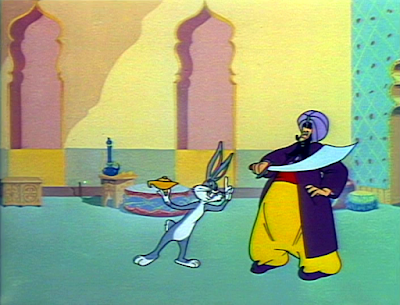Occasionally, one would pop up in a ‘50s short. The eye gag at the end of Droopy’s Double Trouble (MGM, 1951 release) is my favourite. Here’s one from in Broadway Bow Wow’s, released on August 2, 1954.
The tale is of lovers John and Mary, whose dancing act rises to the top of vaudeville. Then, John gets a look at a femme fatale. Here’s the take.




This short was one of two made by Ray Patterson and Grant Simmons for Walter Lantz. People on the internet claim Grantray-Lawrence made it. Let’s look at the facts. Variety of June 16, 1953 reported Lantz had hired Simmons and Patterson as part of a studio expansion, and mentioned on July 21, 1954 the two had formed Grantray Animation to do commercial work for Robert Lawrence. As the cartoon was released August 2, 1954, there’s no way it could have been made at Grantray-Lawrence.
However, Business Screen magazine’s issue of August 1954 reported the two “have been in the animation business for twenty years. Both were formerly with Walt Disney and later with M.G.M. cartoon studios. Operating as a partnership for the past two years, Simmons and Patterson have been producing television animated commercials and writing and directing theatrical cartoons.”
Buried in the background of one scene is a sign reading “Grantray’s Snake Oil.” There are also signs saying “Garity’s Goiter Pellets” (for Lantz’s studio manager, Bill Garity) and another for “Batchelor’s Eye Wash” (for Mickey Bachelder, Lantz’s chief cameraman). There’s also one for “Avery’s Liver Tonic.” I am assuming that’s a reference to Tex Avery, who was hired by Lantz in December 1953 to be his executive producer, according to the Hollywood Reporter of December 23 that year.
There are no animation credits on the short, but Ray Jacobs and Art Landy handled the backgrounds and layouts, and Dick Nelson got screen credit as John, the narrating dog.
This post will be the last on Tralfaz for the indefinite future.

























































